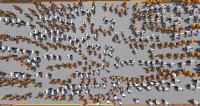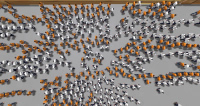Interactive Simulation of Dynamic Crowd Behaviors using
General Adaptation Syndrome Theory
Sujeong Kim, Stephen J. Guy, Dinesh Manocha and Ming C. Lin
![]()
We propose a new technique to simulate dynamic patterns of crowd behaviors using the General Adaptation Syndrome model. Our model accounts for permanent, stable disposition and the dynamic nature of human behaviors that change in response to the situation. The resulting approach accounts for changes in behavior as a response to external stressors, based on well-known theories in psychology. We combine this model with recent techniques on personality modeling for multi-agent simulations to capture a wide variety of behavioral changes and stressors. The overall formulation allows different stressors, expressed as functions of space and time, including time pressure, positional stressors, area stressors and inter-personal stressors. This model can be used to simulate dynamic crowd behaviors at interactive rates, including walking with variable speeds, breaking lane-formation over time and cutting through a normal flow. We also perform qualitative and quantitative comparisons between our simulation results and real-world observations. |
[Downloads]
-
Paper [PDF 5.20MB]
-
Video [MP4 85.8MB]
[Dynamic Behaviors]
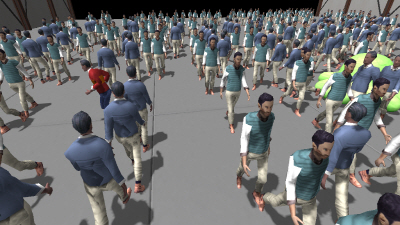 |
Chasing An agent is being chased by a green monster. The chased agent experiences a positional stressor from the monster. |
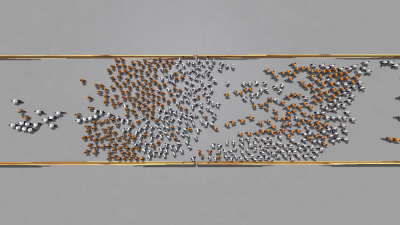 |
Opposing Groups Two large groups of agents move through a hallway in opposite directions. An alarm can turn on that provides an area stressor for the agents |
[Complex Scenarios]
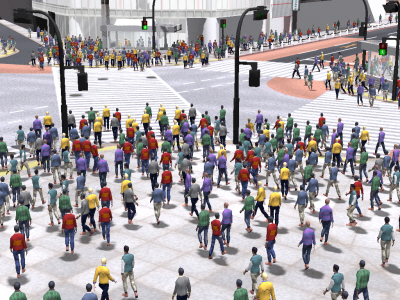 |
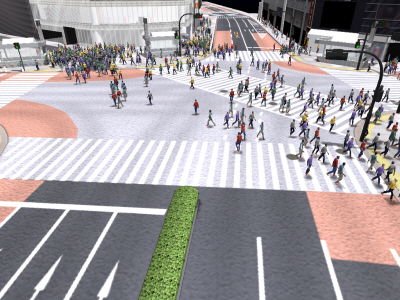 |
 |
Shibuya Crossing 1000 agents participate in a scrabble crossing modeled after the Shibuya metro station in Tokyo. The agents experience two stressors. The first is a pressure stressor when the crossing signal begins flashing, as a signal to clear the intersection. The second is a more intense area stress, when the crossing signal turns red indicating the vehicle traffic will resume soon. |
||
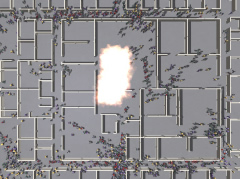 |
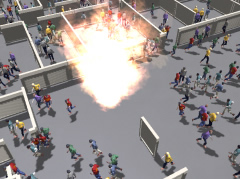 |
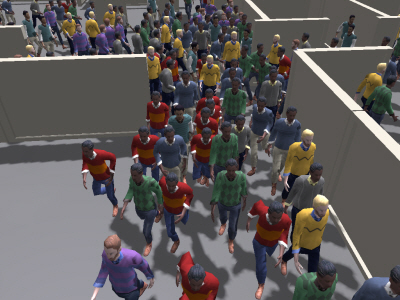 |
Evacuation 1000 agents must evacuate an office environment. All agents experience stress from the fire (second figure) in the center of the building. Additionally some agents, shown in red shirts, also experience an interpersonal stressor from crowding (right most figure). |
||
[Validation]
|
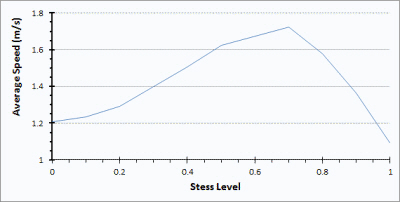
Yerkes-Dodson Law Average speed of agents in the Opposing Groups scenario at various levels of stress. The Yerkes-Dodson Law states that stress should increase performance up to a point then decrease |
|

Pedestrian Crossing Comparison of simulated crossing speeds and real-world data. The less time left to cross, the faster agents move. |
